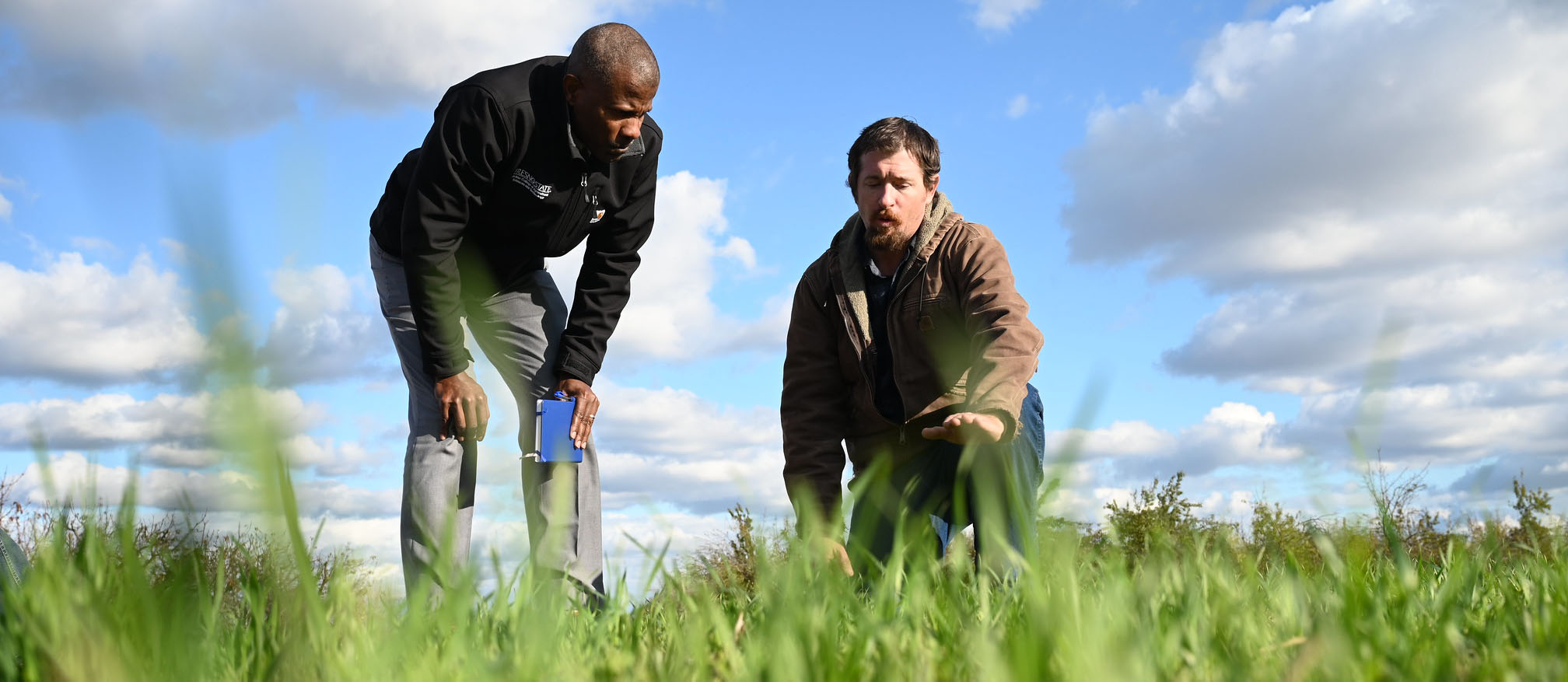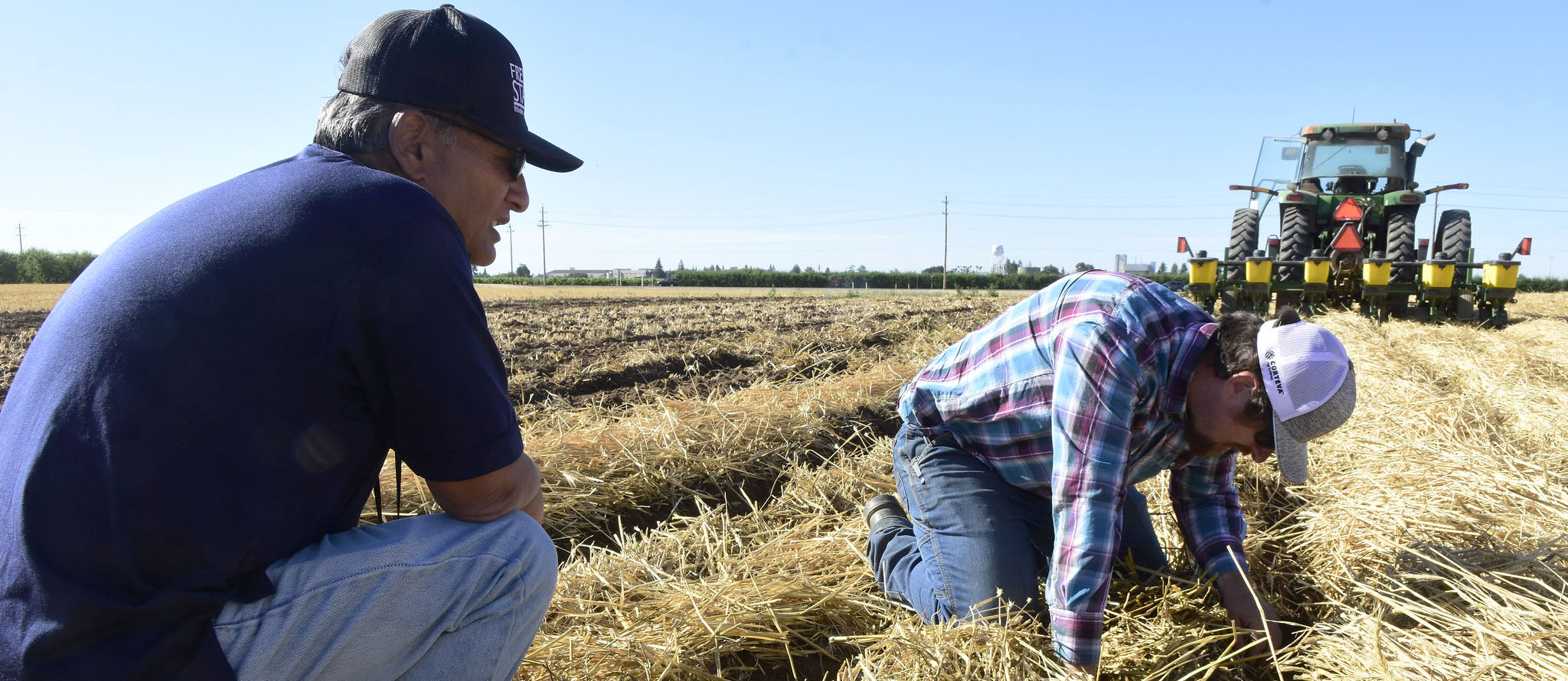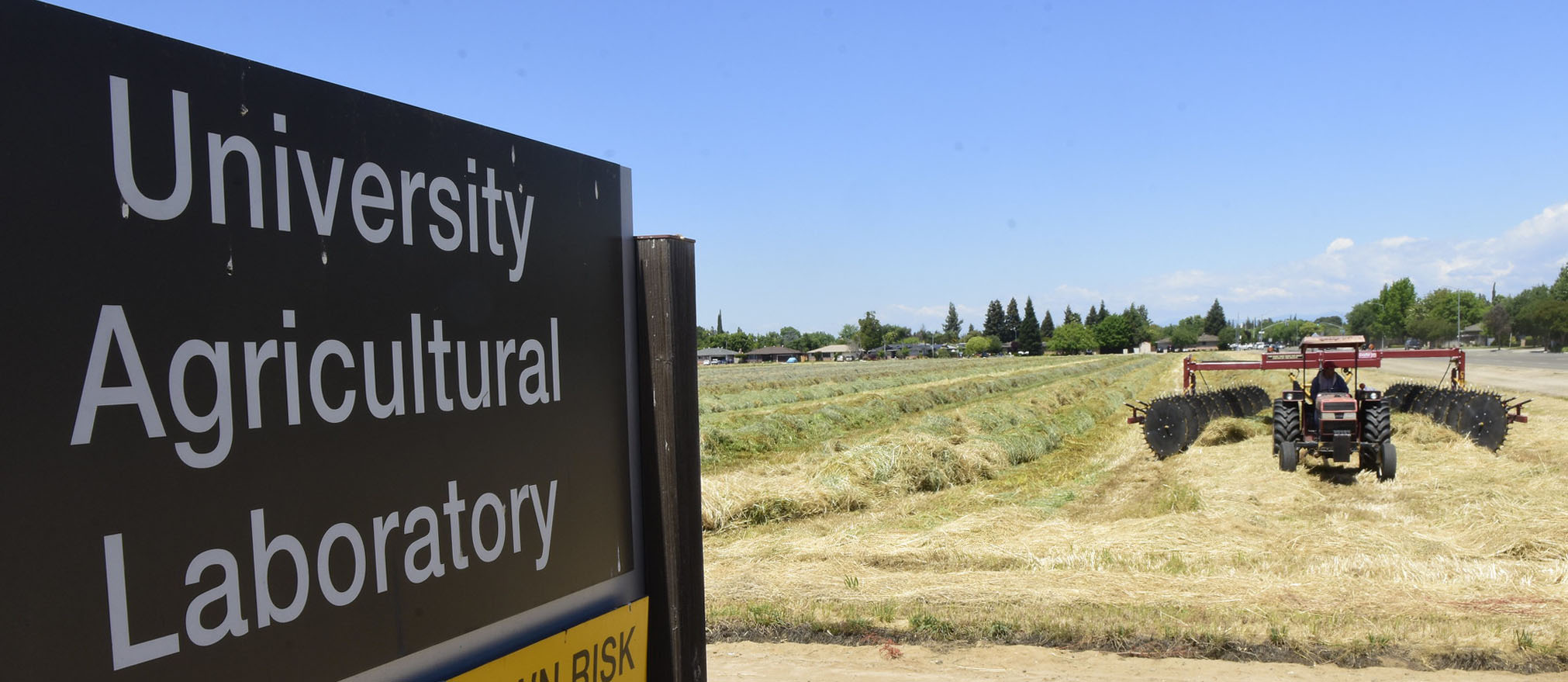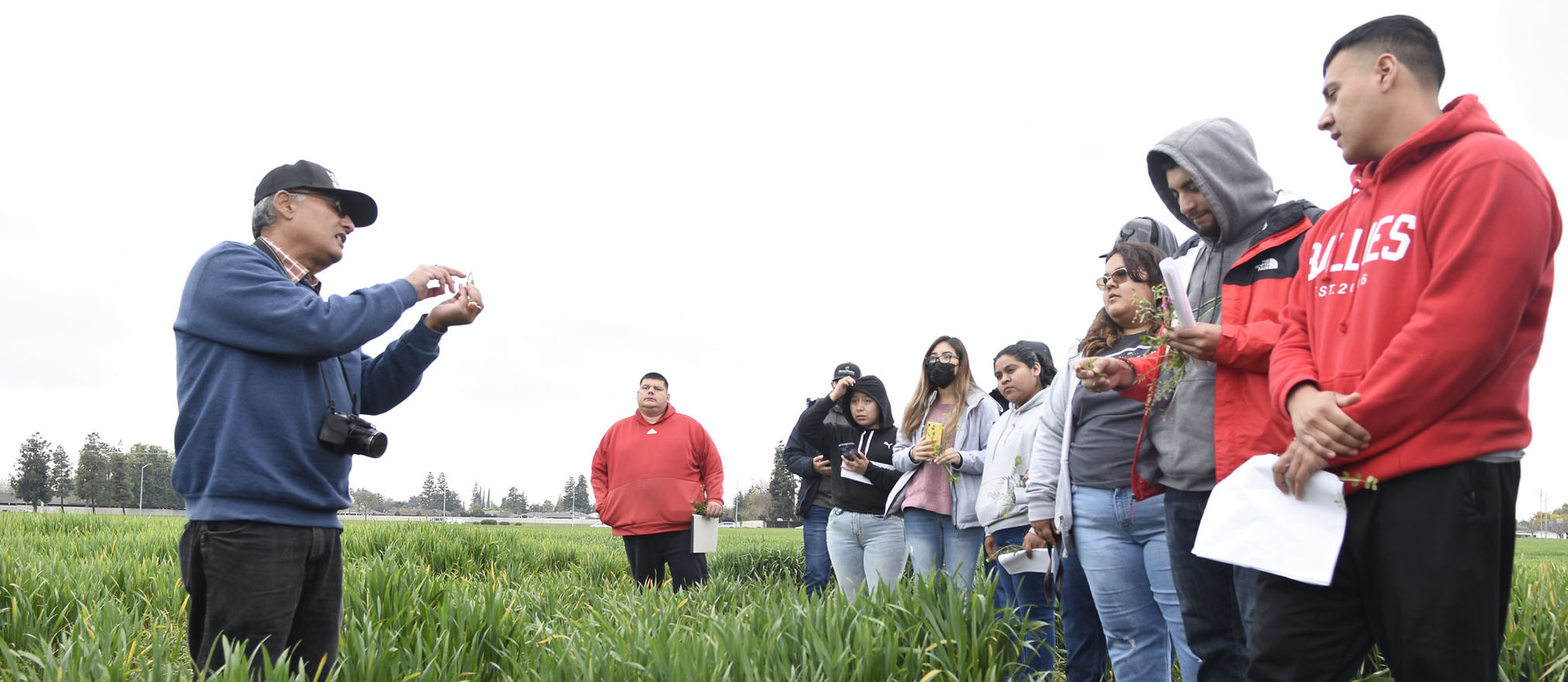University Farm Laboratory
Row Crop Unit
The University Agricultural Laboratory includes approximately 115 acres dedicated to raising forage crops that supplement the needs of campus beef and dairy cattle and sheep while encouraging sustainable farming practices.
Alfalfa and corn are grown in the spring, summer and early fall, followed by winter wheat. Row crop acreage is on a rotational fallow plan with 10 percent of its acreage devoted to cover crops to improve soil health.
Besides relying on natural rainfall, alfalfa and corn can potentially use either flood, subsurface drip or pivot irrigation depending on its location (and demonstrate common Central Valley methods and innovative technology through classes and public demonstrations).
Soil mapping has been conducted on all fields by industry partners, faculty and students to better understand and manage each area's specific water and nutrition needs. To further encourage sustainability, compost created from animal unit byproducts is used on row crop fields so nothing goes to waste.
Farm staff also utilize strip-till methods to reduce land disturabnce, preserve crop residues on the soil surface, and improve soil function. Furthermore, it uses less fuel, has less wear and tear on equipment, and saves money.
Organic acreage has also been created that serve as trial sites for faculty and student research, class labs and special projects that provide produce to campus and area food banks.
Additional row crops are sometimes planted in young pistachio orchards for similar sustainability purposes.



